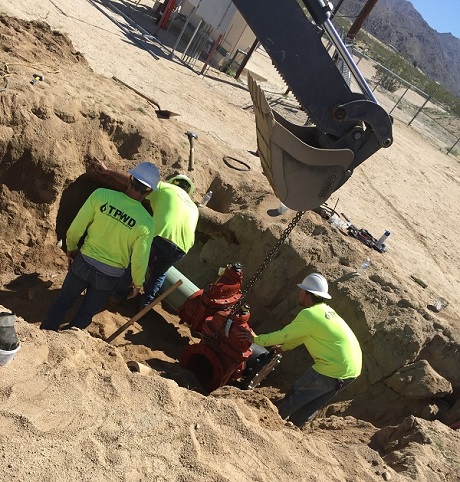
Facts About Our Water
AVAILABILITY
A long-term supply of high quality water is critical to the well-being of our community. The District is able to use its treatment plant to transform vast amounts of non-potable water on the north side of the Pinto Mountain Fault (from the Mesquite Springs Aquifer) into drinking water.
More information about the District’s water demand and availability can be found in the 2020 Urban Water Management and Water Shortage Contingency Plan and the Groundwater Management Plan.
 SOURCE
SOURCE
Water demand is met entirely by local groundwater extractions from four sub-basins south of the Pinto Mountain Fault, which are fed by rainfall in the Pinto Mountains.
The District overlays portions of the Indian Cove, Eastern and Fortynine Palms sub-basins of the Joshua Tree Basin, and part of the Twentynine Palms Valley Basin.
Water is pumped from these sub-basins and delivered through a pipeline system to homes and businesses. Water pumped from the Mesquite Springs sub-basin is treated to remove high levels of fluoride before being distributed.
STORAGE
Water storage capacity is a crucial issue everywhere, and especially in a desert community. In the event of an emergency, such as a power outage, stored water might be the only source available for fire protection and personal use.
Before 1995, the storage capacity for the Twentynine Palms Water District amounted to 3.08 million gallons, held in four reservoirs. It was enough to meet the community’s needs for only three days. Today, the District’s water storage capacity is about 17 million gallons, housed in 10 reservoirs strategically located throughout the District. In an emergency, this is enough to sustain our customers for at least 15 days.

